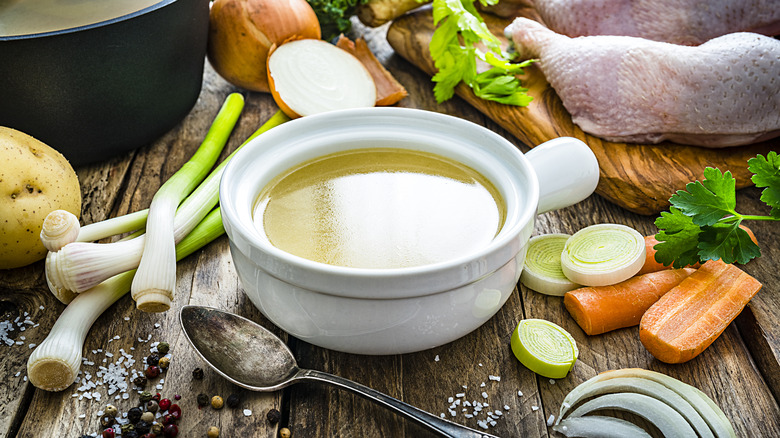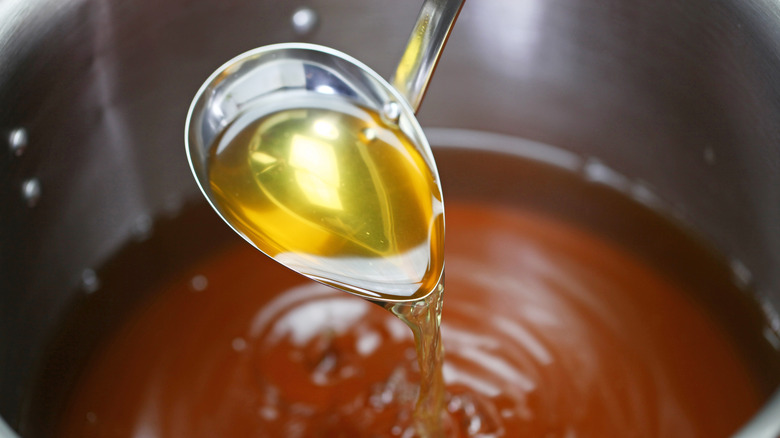The Best Part Of The Chicken To Use For Stock
Making a pot of delicious stock is one of the simple joys of cooking. You can make it as simple or as complicated as you like, with very little chopping involved. Essentially, all you have to do is dump your ingredients into a pot of simmering water and let them work their magic for a few hours. This is why it matters what exactly you're putting in there.
Many traditional chicken stock recipes suggest using the carcass of a whole roast chicken that has been stripped of its meat. However, you can use any chicken bones or pieces to make stock, and not all are created equal! Different parts of the chicken produce stocks with varying flavors, colors, and consistencies. What you're really aiming for is a stock with a clear chicken flavor that isn't muted or muddy, yet is rich in collagen, enough so that it gels when refrigerated. Therefore, if you're choosing one part of the chicken for stock, chicken wings are your best bet for achieving the ideal balance of flavor and gelatin, especially when augmented with a couple of chicken feet.
Let your chicken wings do double duty
At its best, chicken stock is both flavorful and nutritious. Often marketed as bone broth, it's rich in protein, amino acids, and collagen, which can help support muscle mass and reduce inflammation. That's why your mom's chicken noodle soup recipe works wonders the way it does.
However, collagen is concentrated in different parts of the animal. Chicken feet contain the most collagen, and will produce a stock that turns completely solid when chilled. But they aren't particularly flavorful, so they're best used in addition to other parts of the bird. Chicken wings and legs are also rich in collagen and more flavorful than feet, with wings yielding a better-tasting stock. This is great news for people who enjoy homemade chicken wings. Just eat them as usual, and save the bones afterward. Be sure to keep the wingtips, which are not particularly palatable, but break down wonderfully in stock.
Alternatively, you could use a package of uncooked wings as your stock base, but since wings are often pricier than other cuts, this approach might be more wasteful and expensive. While some recommend using raw chicken bones for a clear, consommé-style stock, this is more about aesthetics; roasting the bones will impart much more flavor.
Other top stock tips
Whatever parts of the chicken you use for your stock, ensure you add as much of the raw skin as possible, as it is rich in collagen and other nutrients. You should also add a small amount (about a tablespoon) of white distilled vinegar or apple cider vinegar, which will help break down the skin, bones, and cartilage for a richer stock. If you are using roasted bones, consider cracking them open before adding them to your stock to help release the marrow. (Raw bones would be much harder to break.) This is best achieved by placing your bones in a sealed plastic bag on top of a cutting board, and cracking them with a meat tenderizer.
You can save your bones after making stock for use in a remouillage, or a second, weaker stock. The skin is best discarded after being used for stock. If you are adding chicken meat to enhance your stock's flavor, don't cook it for very long if you plan on eating it. Twenty minutes should be sufficient for meat that has already been cooked; any longer, and it will lose all its flavor.



